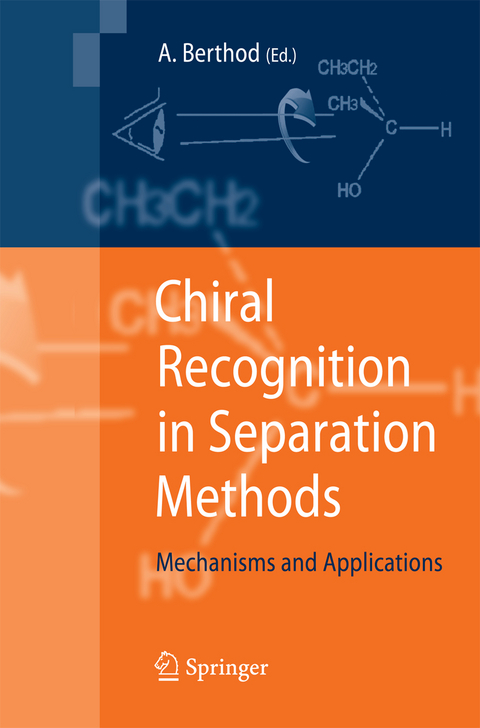
Chiral Recognition in Separation Methods
Springer Berlin (Verlag)
978-3-642-42369-7 (ISBN)
What drives a scientist to edit a book on a speci c scienti c subject such as chiral mechanisms in separation methods? Until December 2005, the journal Analytical Chemistry of the American Chemical Society (Washington, DC) had an A-page section that was dedicated to simple and clear presentations of the most recent te- niques or the state of the art in a particular eld or topic. The "A-page" section was prepared for a broad audience of chemists including industrial professionals, s- dents as well as academics looking for information outside their eld of expertise. 1 Daniel W. Armstrong, one of the editors of this journal and a twenty-year+ long friend, invited me to present my view on chiral recognition mechanisms in a simple and clear way in an "A-page" article. In 2006, the "A-page" section was maintained as the rst articles at the beginning of each rst bi-monthly issue but the pagination was no longer page distinguished from the regular research articles published by the journal. During the time between the invitation and the submission, the A-page section was integrated into the rest of the journal and the article appeared as (2006) Anal Chem (78):2093-2099.
Chiral Recognition Mechanisms in Enantiomers Separations: A General View.- Preparation and Chiral Recognition of Polysaccharide-Based Selectors.- Description and Evaluation of Chiral Interactive Sites on Bonded Cyclodextrin Stationary Phases for Liquid Chromatography.- Cyclofructans, a New Class of Chiral Stationary Phases.- Chiral Recognition and Enantioseparation Mechanisms in Capillary Electrokinetic Chromatography.- Chiral Recognition Mechanism: Practical Considerations for Pharmaceutical Analysis of Chiral Compounds.- Chiral Recognition with Macrocyclic Glycopeptides: Mechanisms and Applications.- Vancomycin Molecular Interactions: Antibiotic and Enantioselective Mechanisms.- Enantioselective Recognition in Solution: The Case of Countercurrent Chromatography.- Enantioselective Properties of Nucleic Acid Aptamer Molecular Recognition Elements.- Chiral Ionic Liquids in Chromatographic Separation and Spectroscopic Discrimination.
From the reviews:
"I strongly recommend this book to those interested in understanding the mechanisms responsible for chiral recognition in chromatographic and electrophoretic techniques. ... This book may be of interest both to beginners and to confirmed practitioners in the field. ... Chiral recognition in separation methods is a valuable book compiling a detailed description of most of the essential chiral selectors employed in chromatographic and electrophoretic techniques. ... Both students and practitioners interested in enantiorecognition mechanisms should have it in their library." (Caroline West, Analytical and Bioanalytical Chemistry, Vol. 400, 2011)| Erscheint lt. Verlag | 12.10.2014 |
|---|---|
| Zusatzinfo | XIV, 337 p. |
| Verlagsort | Berlin |
| Sprache | englisch |
| Maße | 155 x 235 mm |
| Gewicht | 539 g |
| Themenwelt | Medizin / Pharmazie ► Medizinische Fachgebiete ► Pharmakologie / Pharmakotherapie |
| Medizin / Pharmazie ► Pflege | |
| Naturwissenschaften ► Chemie ► Analytische Chemie | |
| Schlagworte | amines • Chiral Ionic Liquids • Chiral Selection • Chiral Selectors • Chromatography • chromium • Development • Environment • Environmental monitoring • Food • Liquid chromatography • Pharmaceutical • Polysaccharide-Based Selectors • Research • Toxicology |
| ISBN-10 | 3-642-42369-8 / 3642423698 |
| ISBN-13 | 978-3-642-42369-7 / 9783642423697 |
| Zustand | Neuware |
| Haben Sie eine Frage zum Produkt? |
aus dem Bereich


